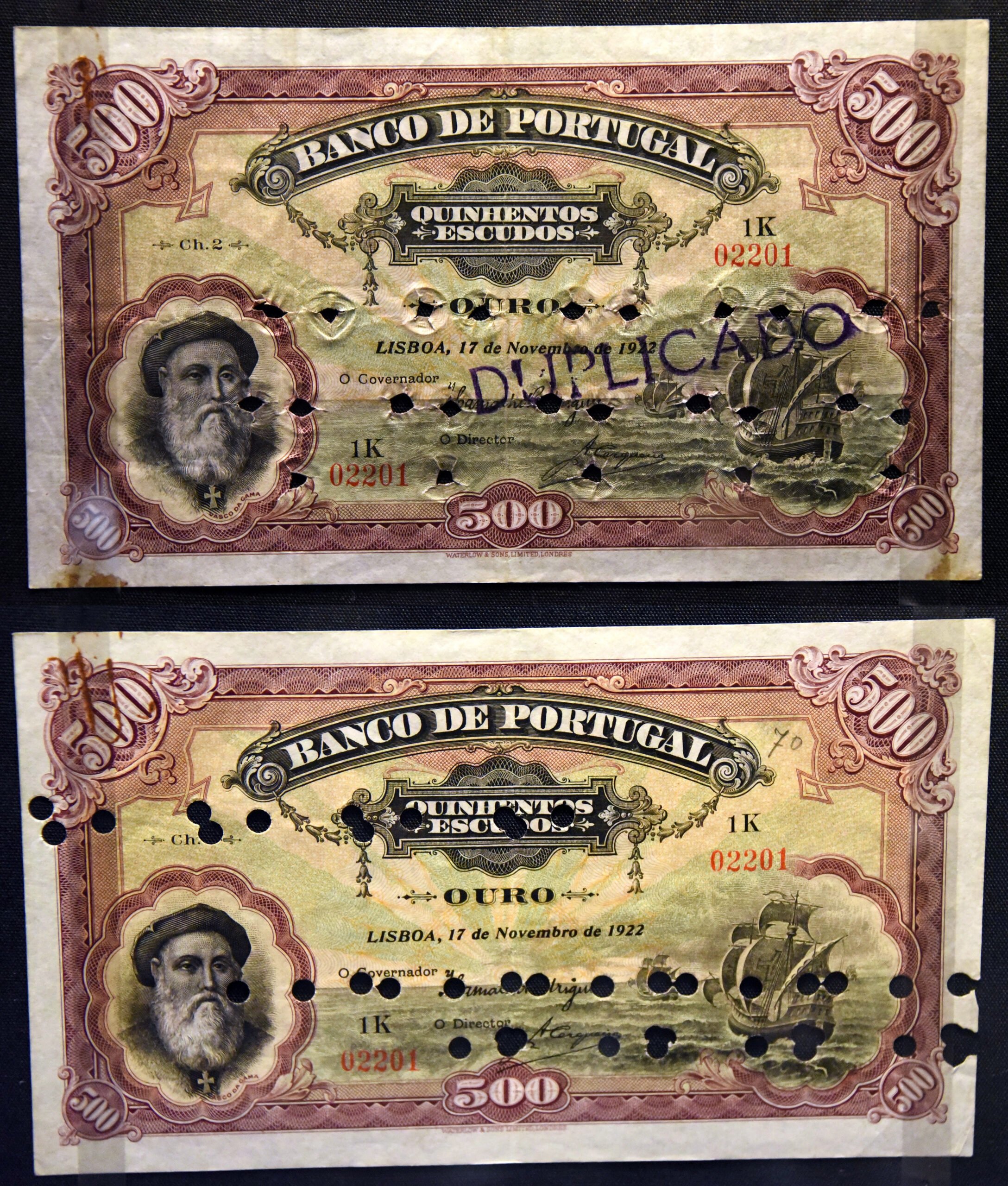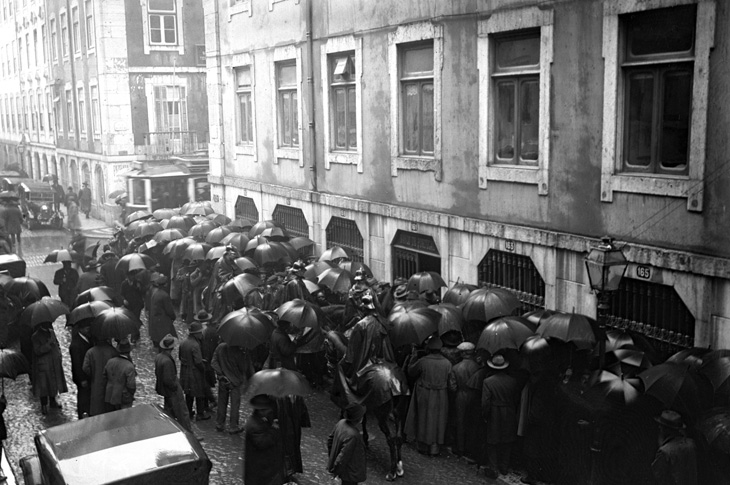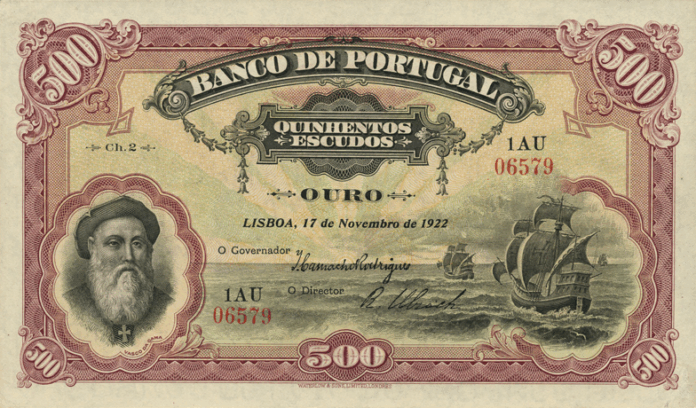Few events in financial history are as astonishing as the Portuguese Bank Note Scandal of 1925. It was a real-life story of deception so extraordinary that it almost sounds like fiction. At the center of the plot was a man named Artur Virgílio Alves Reis, a clever and ambitious Portuguese fraudster who managed to convince one of the world’s most respected printing companies to produce legitimate Portuguese banknotes based on forged documents. The result was a wave of chaos that shook Portugal’s economy, toppled political stability, and helped pave the way for a new dictatorship.
What follows are fifteen incredible facts about this unbelievable episode in Portuguese history.
1. Artur Alves Reis started out as a poor young man with big ambitions.
Born in Lisbon in 1896, Reis grew up in a modest household but dreamed of a life filled with wealth and influence. He briefly attended engineering school but dropped out after his first year. He later forged a diploma from a fake institution called the “Oxford Polytechnic School of Engineering” so he could present himself as a legitimate engineer.
2. His first major crime happened in Angola years before the bank note scheme.
Before he became famous for his financial deception, Reis was already dabbling in fraud. While living in Portuguese Angola, he forged checks and manipulated accounts to gain control of a company called Companhia Ambaca. He was eventually caught and arrested but managed to secure an early release after only a few weeks in jail. During his time behind bars, he began to develop the outline for what would become one of the boldest crimes in world history.
3. The core of his plan was not to counterfeit money but to print real notes using forged authorization.
Unlike typical counterfeiters, Alves Reis realized that he did not need to print fake notes if he could trick the right people. He forged a contract that appeared to be from the Banco de Portugal. This authorized him to print new 500-escudo bank notes for use in the colony of Angola. This document looked completely authentic and included fabricated signatures and stamps from bank officials and the Portuguese government. Alves Reis took the forged papers to the respected London printing company Waterlow & Sons, which at the time printed official Portuguese currency. Believing the documents were real, the company agreed to produce the notes.
In other words, Alves Reis was not counterfeiting money in the traditional sense. The notes were real, printed on the same paper with the same ink and equipment as the legitimate ones, but they were ordered under false pretenses.

4. The amount of money printed was so large that it equaled nearly one percent of Portugal’s economy!
The contract authorized the printing of about 200,000 banknotes, each worth 500 escudos. That amounted to a total face value of 100 million escudos, which was close to one percent of Portugal’s entire gross domestic product at the time! The enormous scale of this scheme made it one of the most damaging financial crimes ever attempted in Europe.
5. He created a fake development bank to launder the money.
To move the new cash into circulation without raising suspicion, Alves Reis established a front company called the Banco de Angola e Metrópole. Officially, it was meant to promote investment and development between Portugal and its African colony, Angola. In reality, it was a way to distribute and launder the illicitly printed money. Reis and his partners used the funds to buy property, invest in businesses, and even acquire shares in the Banco de Portugal itself. His ambition was so vast that he hoped to take control of the central bank from within.
6. For months, the scheme worked perfectly.
The forged notes flowed freely into the Portuguese economy. Because they were identical to genuine notes, banks and merchants accepted them without hesitation. Reis used the cash to fund numerous ventures, including real estate, transportation, and agriculture. He even became known for his generosity and charm. He donated to charities, hosted elegant parties – what was not to like? Lisbon’s elite began to view him as a rising financial genius. Nobody suspected that his growing empire was built on deception.
7. The discovery of duplicate serial numbers exposed the entire plot.
The downfall of the operation came from an unavoidable detail: serial numbers. Because the fake notes were printed using real templates, they duplicated serial numbers already assigned to legitimate currency. Eventually, bankers noticed two identical 500-escudo notes with the same serial code. When the Banco de Portugal began to investigate, the shocking truth emerged. A large portion of the nation’s circulating currency had been illegally printed!

8. The scandal caused a nationwide panic and a financial crisis.
Once news of the duplicated banknotes spread, public trust in the Portuguese financial system collapsed. People rushed to withdraw their savings, and the value of the escudo plummeted. The Banco de Portugal was forced to recall every 500-escudo note in circulation within a few weeks. Businesses struggled to determine which bills were valid and which were part of the forgery. The crisis sent shockwaves through Portugal’s economy and shattered confidence in the country’s institutions.

9. The British printing company was sued and forced to pay huge damages.
The Banco de Portugal filed a lawsuit against Waterlow & Sons in the British courts, claiming that the company had printed the notes negligently. After a long and complicated legal battle, the court ruled in favor of Portugal. Waterlow & Sons was ordered to pay damages of more than £600,000, which was an enormous sum at the time. The case became one of the most famous corporate lawsuits in British legal history.
10. The scandal contributed to the fall of Portugal’s First Republic.
The fraud came at a moment of growing political instability. The Portuguese public was outraged, not only at the deception but also at the government’s apparent incompetence in preventing it. In 1926, only a year after the scandal broke, a military coup overthrew the fragile First Republic and began a new era of authoritarian rule. The chain of events eventually led to the long dictatorship of António de Oliveira Salazar, who would dominate Portuguese politics for decades.
11. Artur Alves Reis lived like a king during his short reign as a fake millionaire.
While his scheme lasted, Reis enjoyed incredible luxury. He purchased mansions in Lisbon, filled his home with fine art, and drove expensive automobiles. He even built a collection of properties in the countryside and funded numerous public works to boost his public image. He became known as one of the wealthiest men in Portugal, admired by many who had no idea that his fortune was based on fraud.
12. His partners came from across Europe and included diplomats, traders, and businessmen.
Reis did not act alone. His closest associates included José Bandeira, a Portuguese trader who used his diplomatic connections to add legitimacy to the forged documents. Others included a Dutch businessman named Karel Marang and a German trader named Adolph Hennies. Each played a role in distributing the money and managing the growing network of fake investments. When the fraud was discovered, some fled the country while others faced prison sentences alongside Reis.
13. The press exposed the scandal after months of rumors.
In the fall of 1925, Portuguese journalists began noticing strange financial activities surrounding the Banco de Angola e Metrópole. Reporters from the Lisbon newspaper O Século launched an investigation and found irregularities in the company’s operations. On December 5, 1925, the paper published a front-page article revealing the massive fraud. The next day, authorities raided the bank, seized documents, and arrested Alves Reis. The front-page headline declared, “The Country in Crisis,” capturing the public shock that followed.
14. Alves Reis was sentenced to twenty years in prison but served only ten.
His trial began in 1930 and attracted huge attention. Despite his confident defense, the evidence was overwhelming. He was sentenced to twenty years in prison, the maximum penalty for fraud in Portugal at the time. After serving ten years, he was released in 1945 for good behavior. In his later years, he lived quietly and never regained his former influence. He died of a heart attack in Lisbon in 1955 at the age of 59.
15. The scandal remains one of the most extraordinary frauds in modern history.
The Portuguese Bank Note Scandal is remembered not just for its size but for its sheer audacity. Alves Reis did not rely on crude counterfeiting. Instead, he exploited weaknesses in bureaucracy and trust. He proved that confidence, paperwork, and presentation could be as powerful as ink and paper. The affair has since been studied by economists, historians, and criminologists as an example of how fragile financial systems can be when oversight and verification are weak.
Why This Story Still Matters
The story of Artur Alves Reis is both fascinating and frightening. It demonstrates how an ambitious individual with a deep understanding of systems and psychology can manipulate entire institutions. By exploiting trust, bureaucracy, and colonial politics, Reis created chaos that reached from Lisbon to London and beyond.
The scandal revealed how vulnerable financial institutions can be when checks and balances fail. It also showed that economic crimes do not just hurt banks. They can also alter the political course of a nation. In Portugal’s case, the resulting loss of public faith helped usher in decades of authoritarian rule.
Today, collectors still hunt for the infamous 500-escudo notes, which are prized relics of one of the boldest crimes ever attempted. The story endures as a reminder that the most dangerous frauds are not the ones printed in secret basements, but those committed in plain sight, wrapped in the appearance of legitimacy.
The Portuguese Bank Note Scandal remains an almost unbelievable tale of ambition, intelligence, and deception so daring that it nearly brought a nation to its knees. It is truly one of the greatest financial stories you’ve probably never heard before and surely one that Portugal would like to forget forever.


